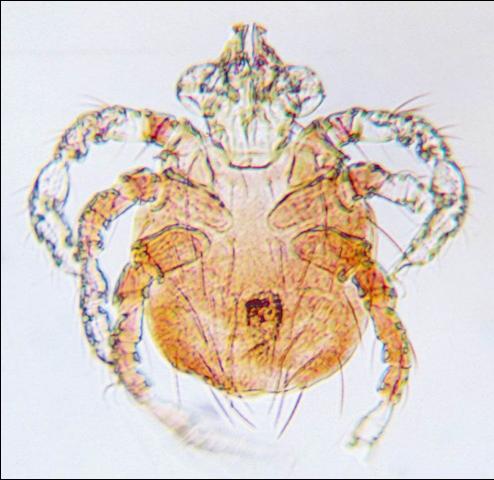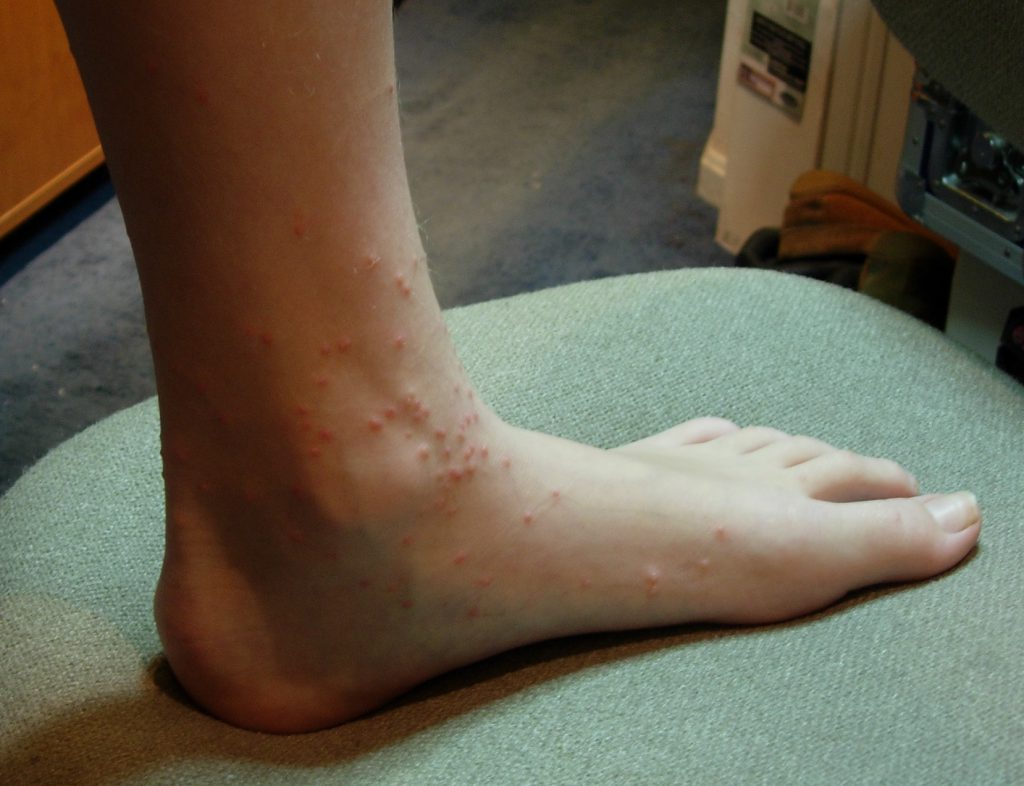Chiggers, also known as ‘red bugs’ are the larvae of mites in the family Trombiculidae. If you’ve ever got an infestation after being in the woods, you’re familiar with the intense itching and reddish welts they cause. In some parts of the world, they are able to transmit scrub typhus, but luckily for us in Florida, they aren’t known to transmit human diseases.
The life cycle of chiggers consist of an egg, prelarva, larva, nymph and adult. The female will lay her eggs in a sheltered area and the egg will hatch into the prelarva. This is a non-feeding stage. The larva stage is the parasitic stage that feeds on animals and humans, although humans are not their preferred host. During this life cycle stage, they will feed on anything from small mammals to birds, reptiles, and amphibians. You’ll find chiggers in damp, low areas where brush is heavy.
Chiggers use their piercing sucking mouthparts to suck fluids from the skin. After three days of feeding, the larva drops to the ground and transforms into the nymphal stage. The nymph and adult stage have eight legs. The entire life cycle can require two months to one year, depending on temperature, moisture and location.
When chiggers feed on humans, they attach themselves to the skin, hair follicles or pores with their piercing sucking mouthparts. When attached, they are generally not noticed for some time and itching from chigger bites is usually not noticed for four to eight hours after they have been attached or removed. While feeding, they inject a fluid into the skin that dissolves tissue. This fluid injection causes the welts to appear which can last up to two weeks. Contrary to popular belief, chiggers do not actually burrow into the skin and the welts do not contain them.
Chiggers can be removed from the skin by taking a hot shower or bath and lathering with soap. Since the symptoms of chigger bites do not appear for several hours after a bite, it is not always possible to prevent welts caused by bites. If welts appear, antiseptic should be used. Temporary itching relief may be achieved by using anesthetics available at the drug store.
If you’re going into areas that may be infested with chiggers, wear protective clothing and use repellents containing DEET. Be sure to apply them to the legs, ankles, cuffs, waist, and sleeves of clothing. Be sure to always follow the label. For more information on chiggers, contact your local UF/IFAS Extension Office.
For more information, please visit:
- Air Potato Leaf Beetles are Here to Help - February 3, 2022
- Chiggers - February 12, 2021
- Yellow flies, deer flies and horse flies, oh my! - June 7, 2019


